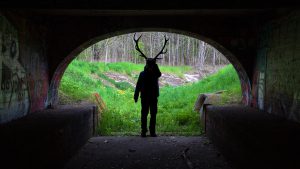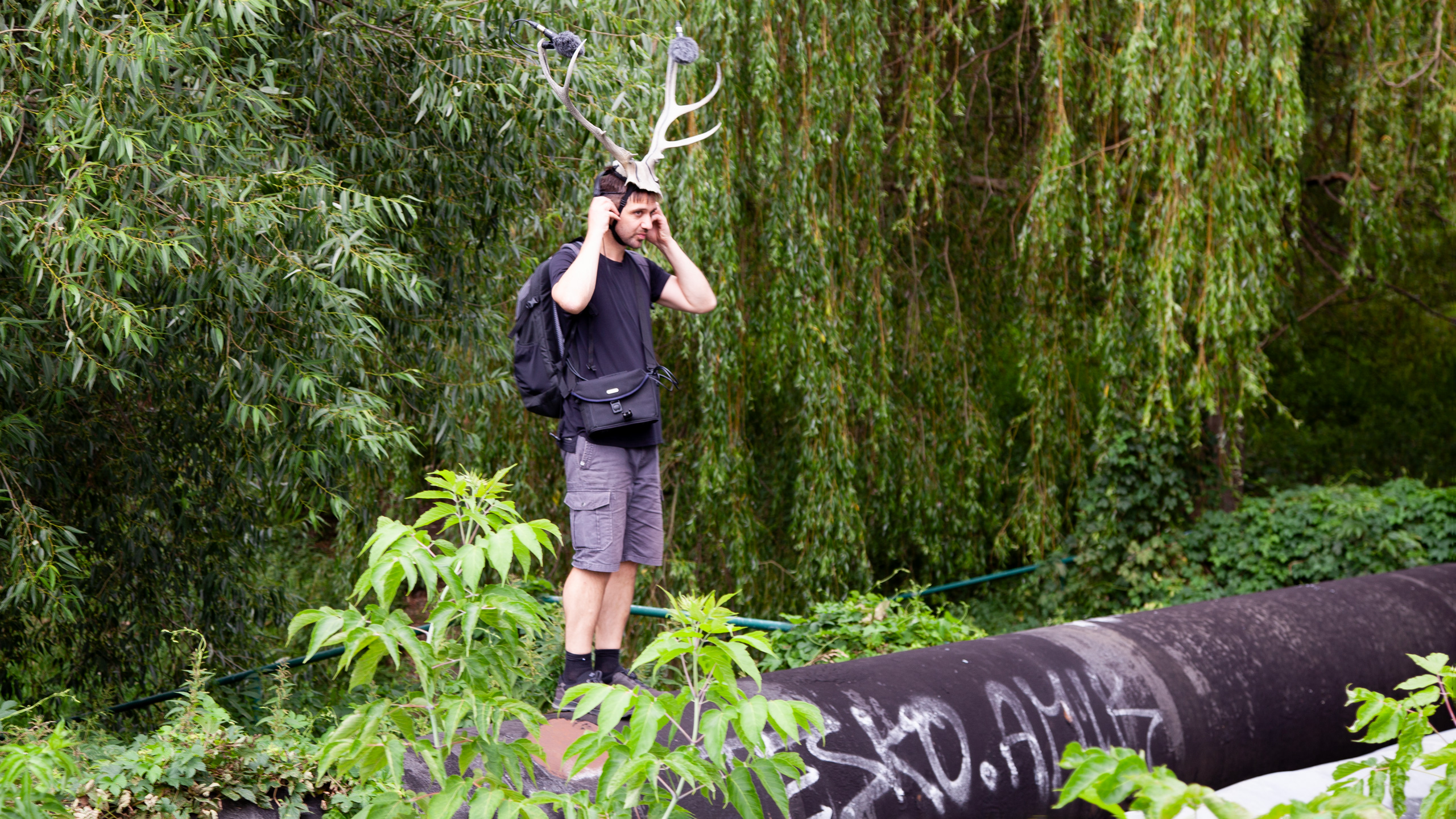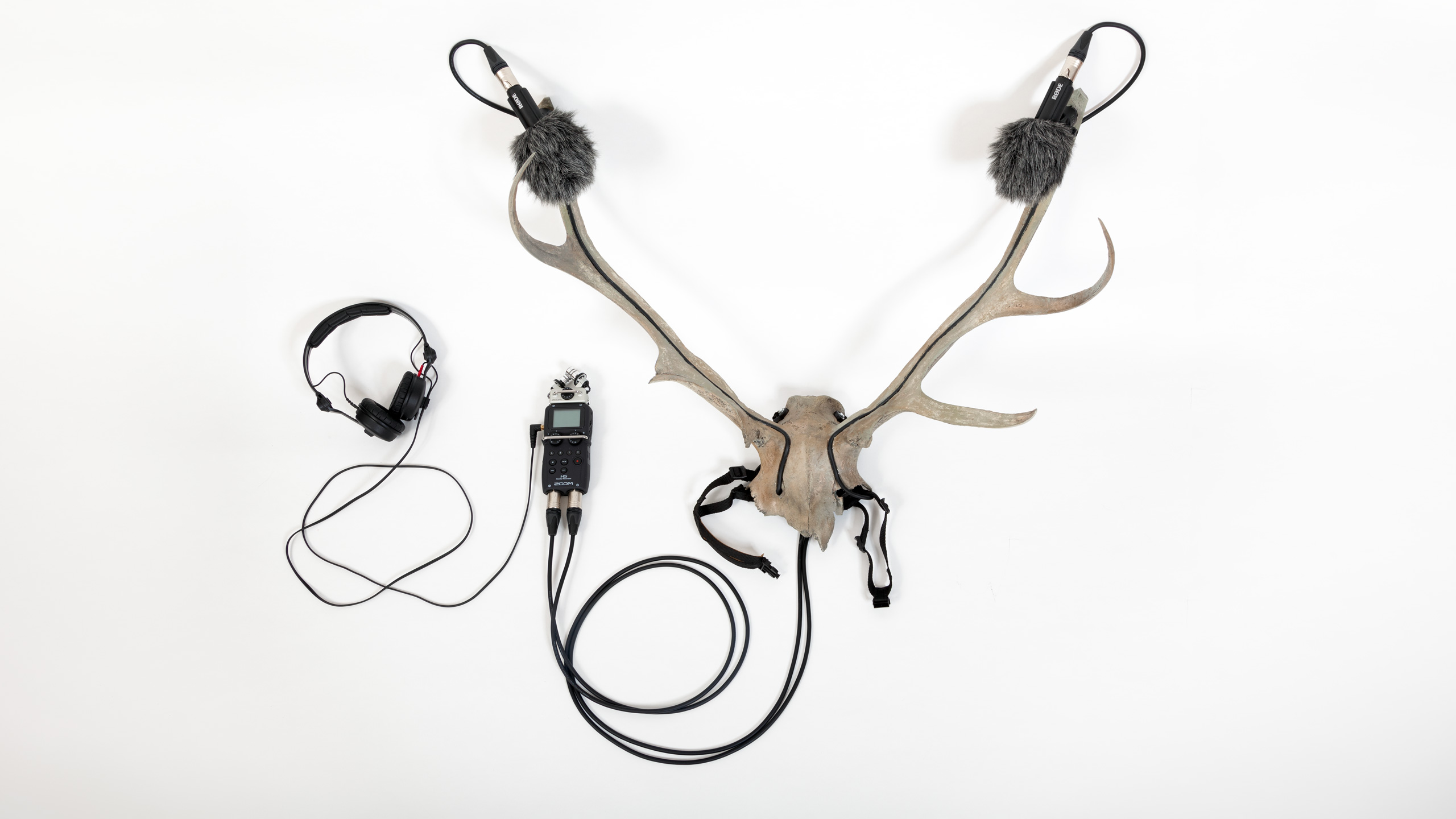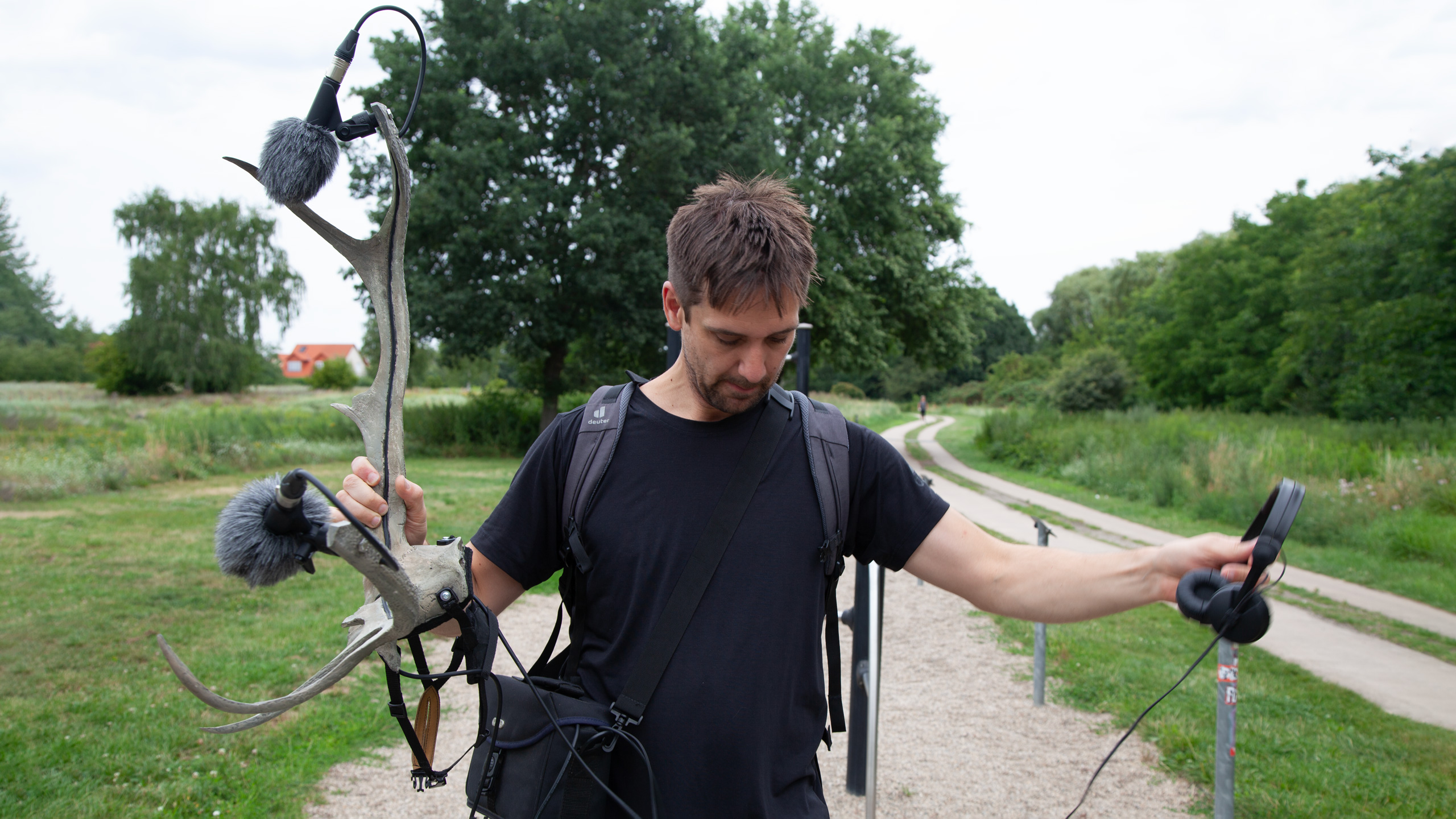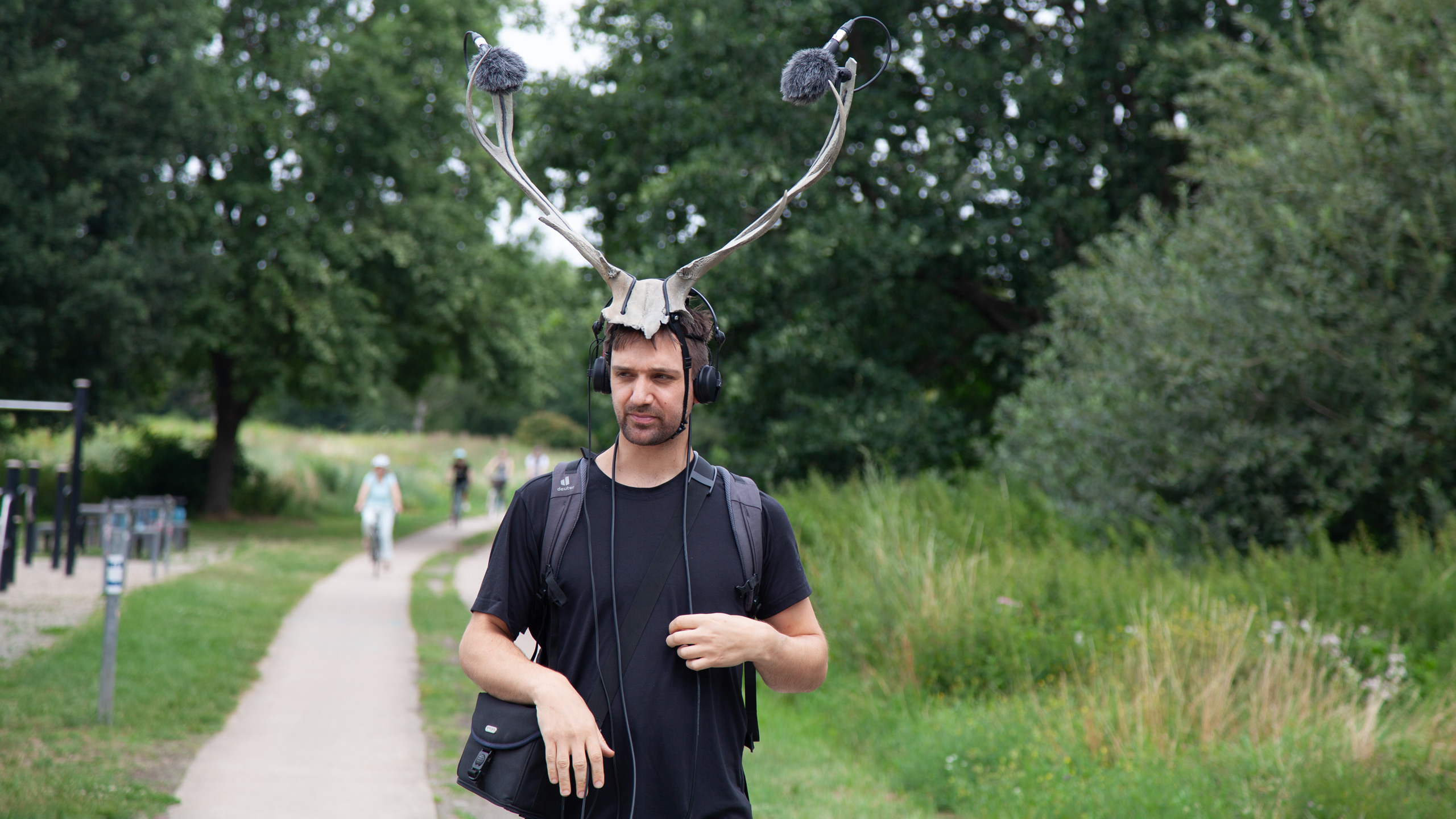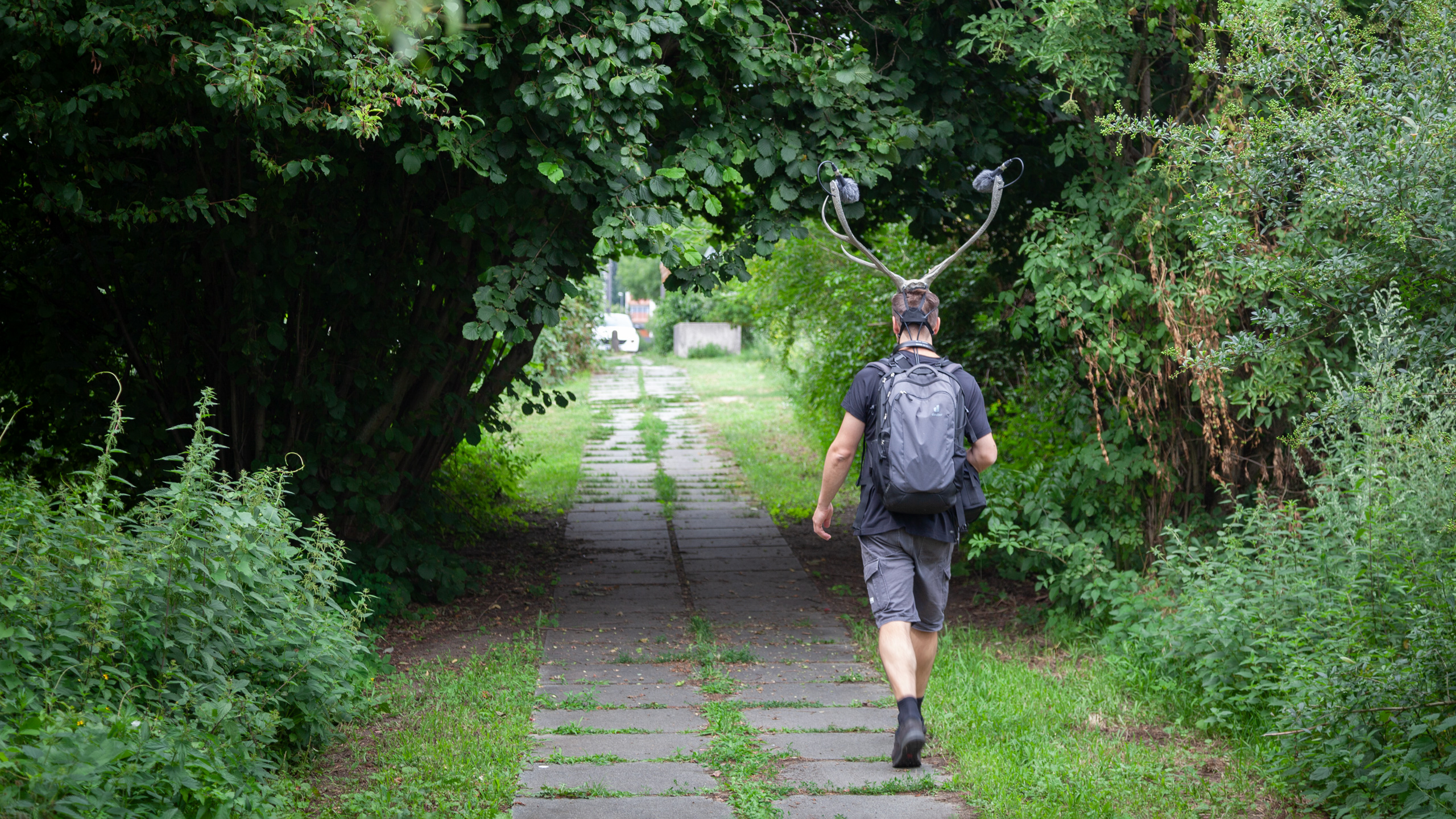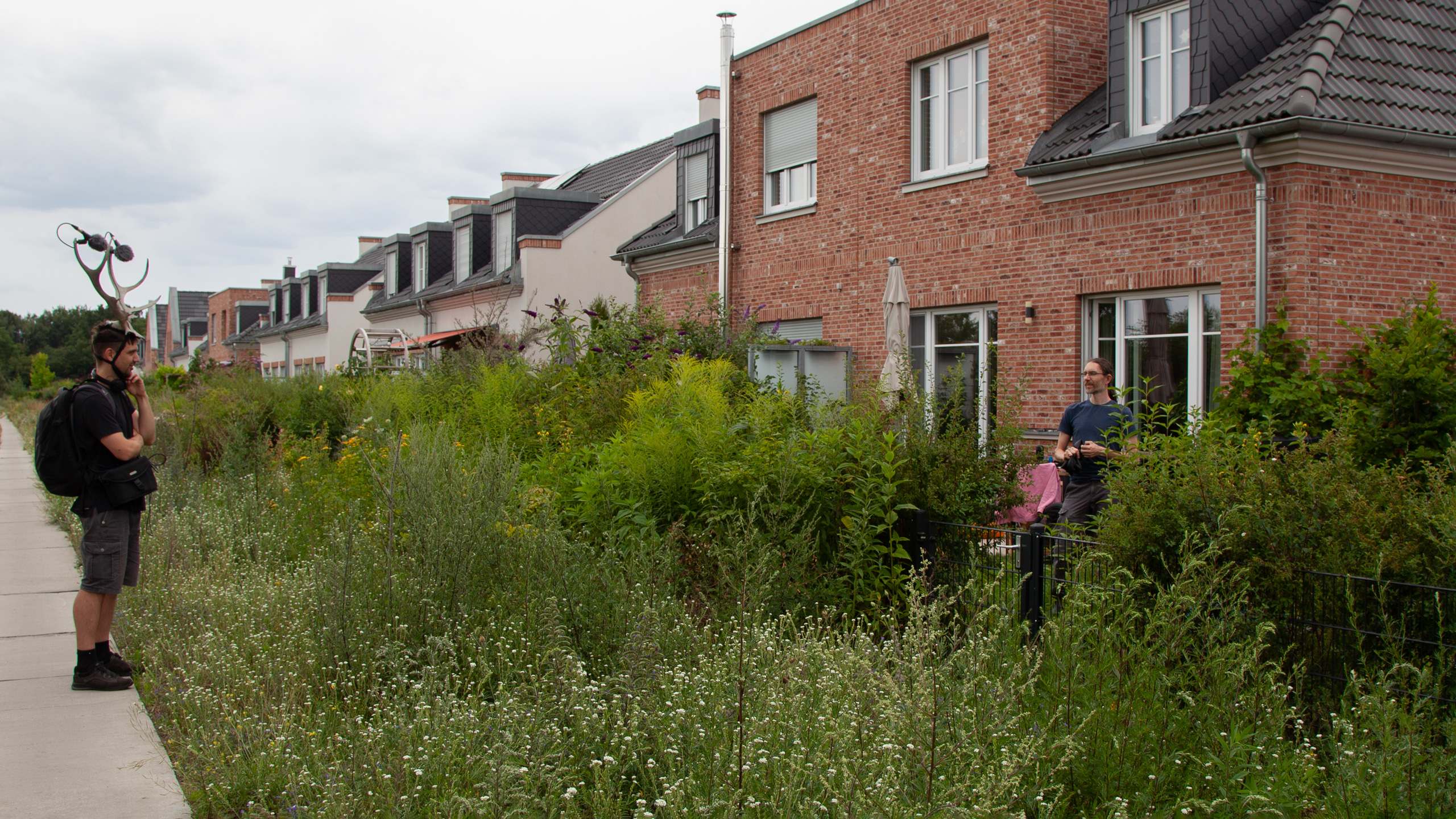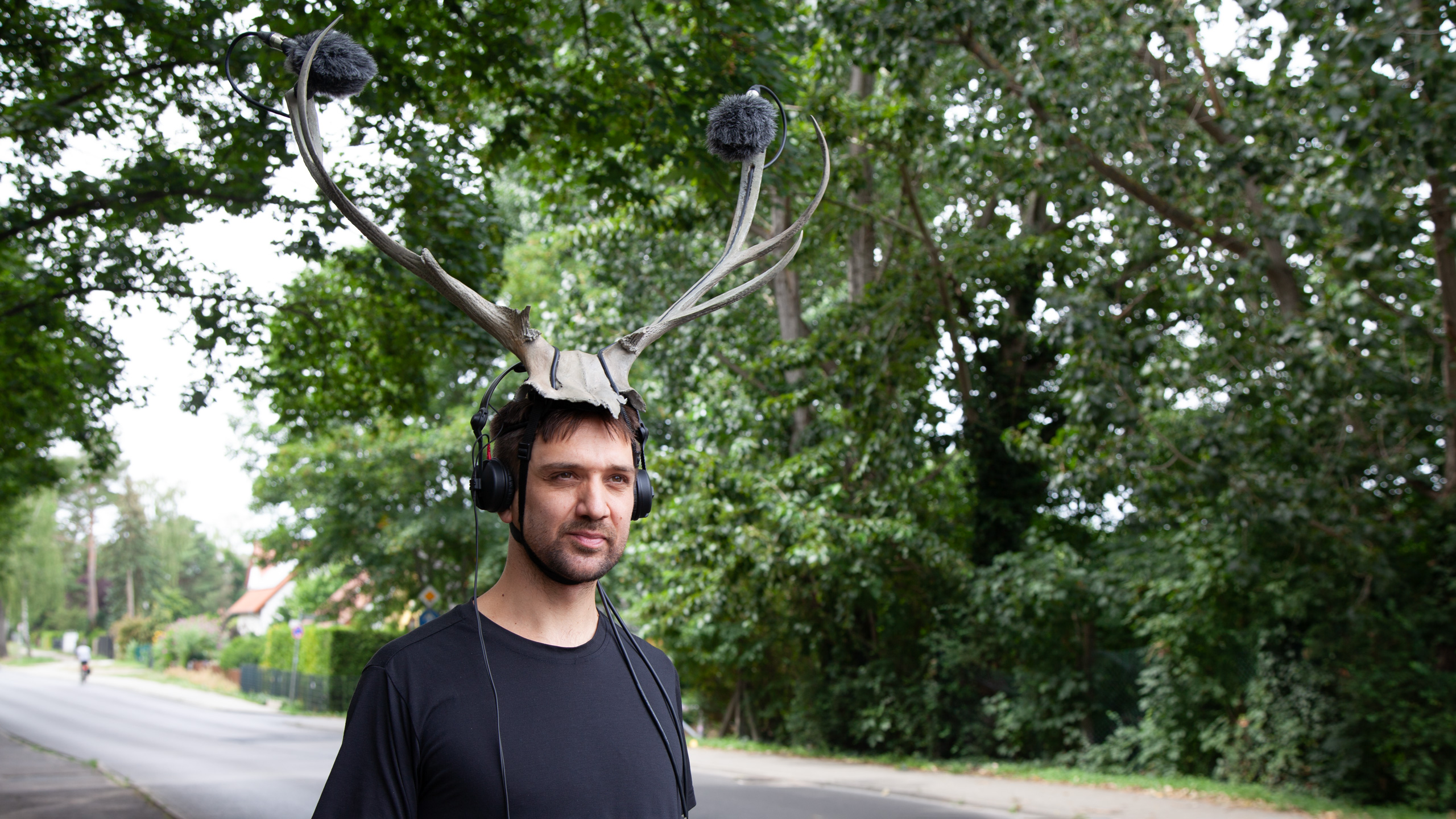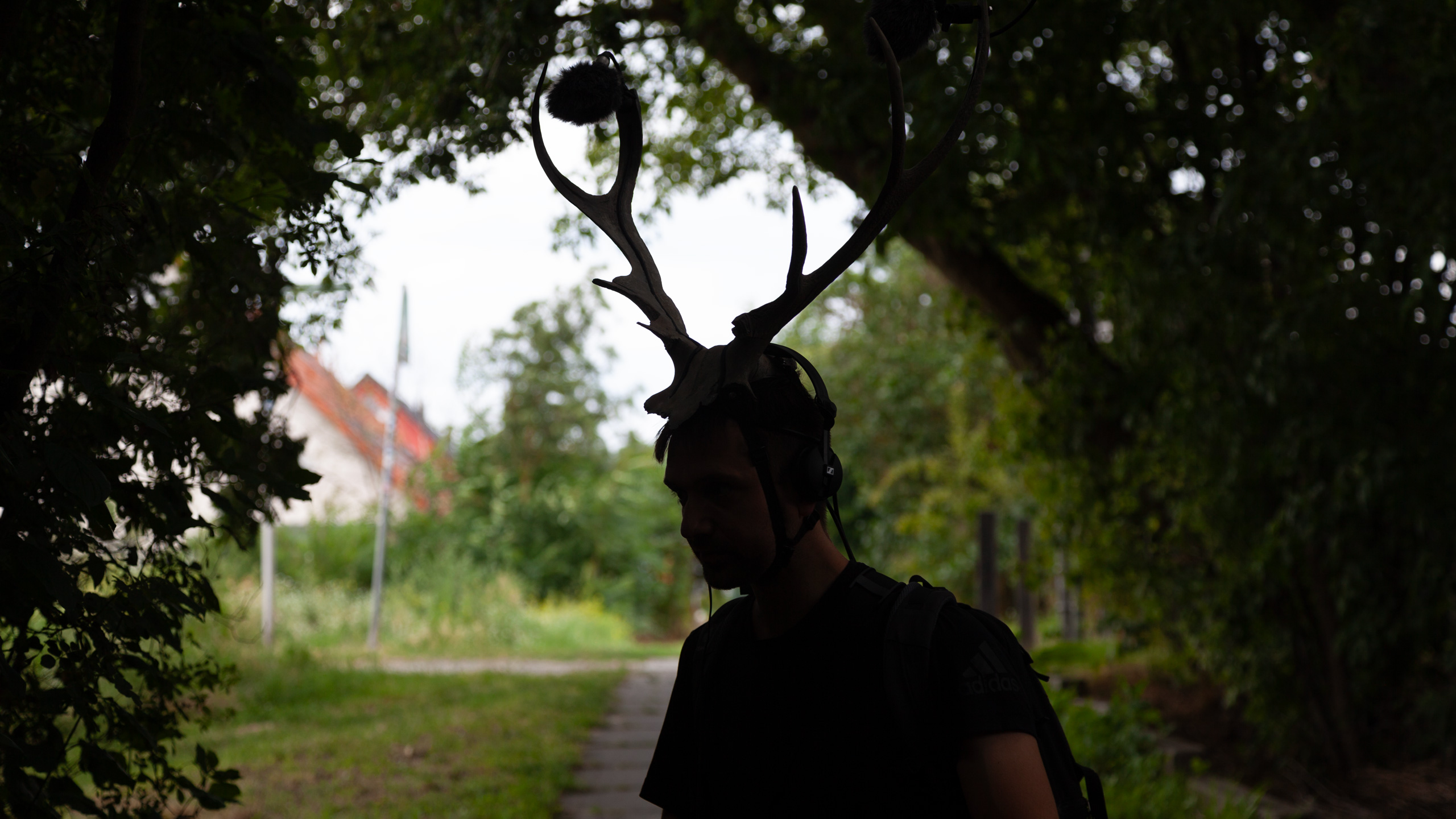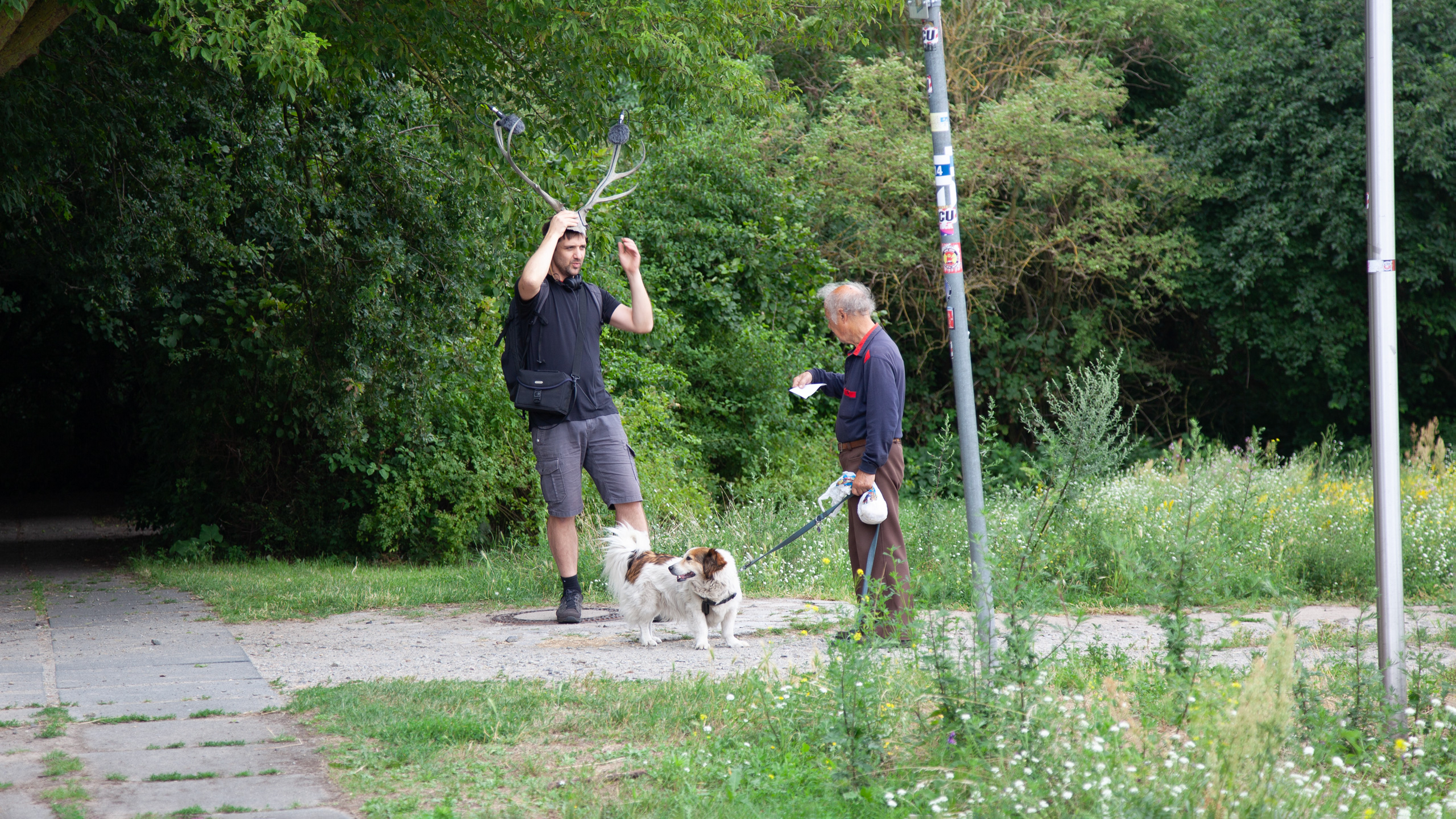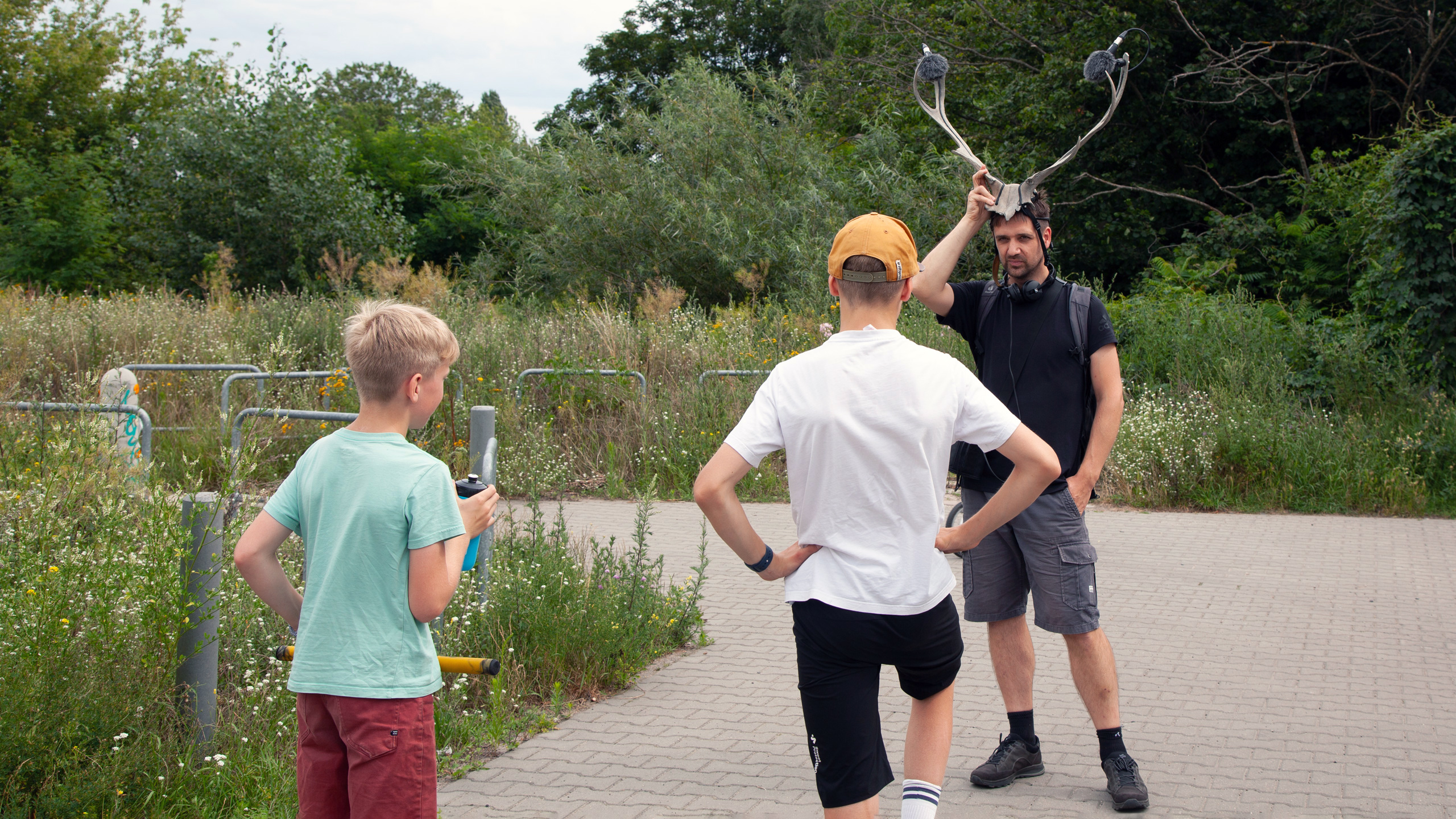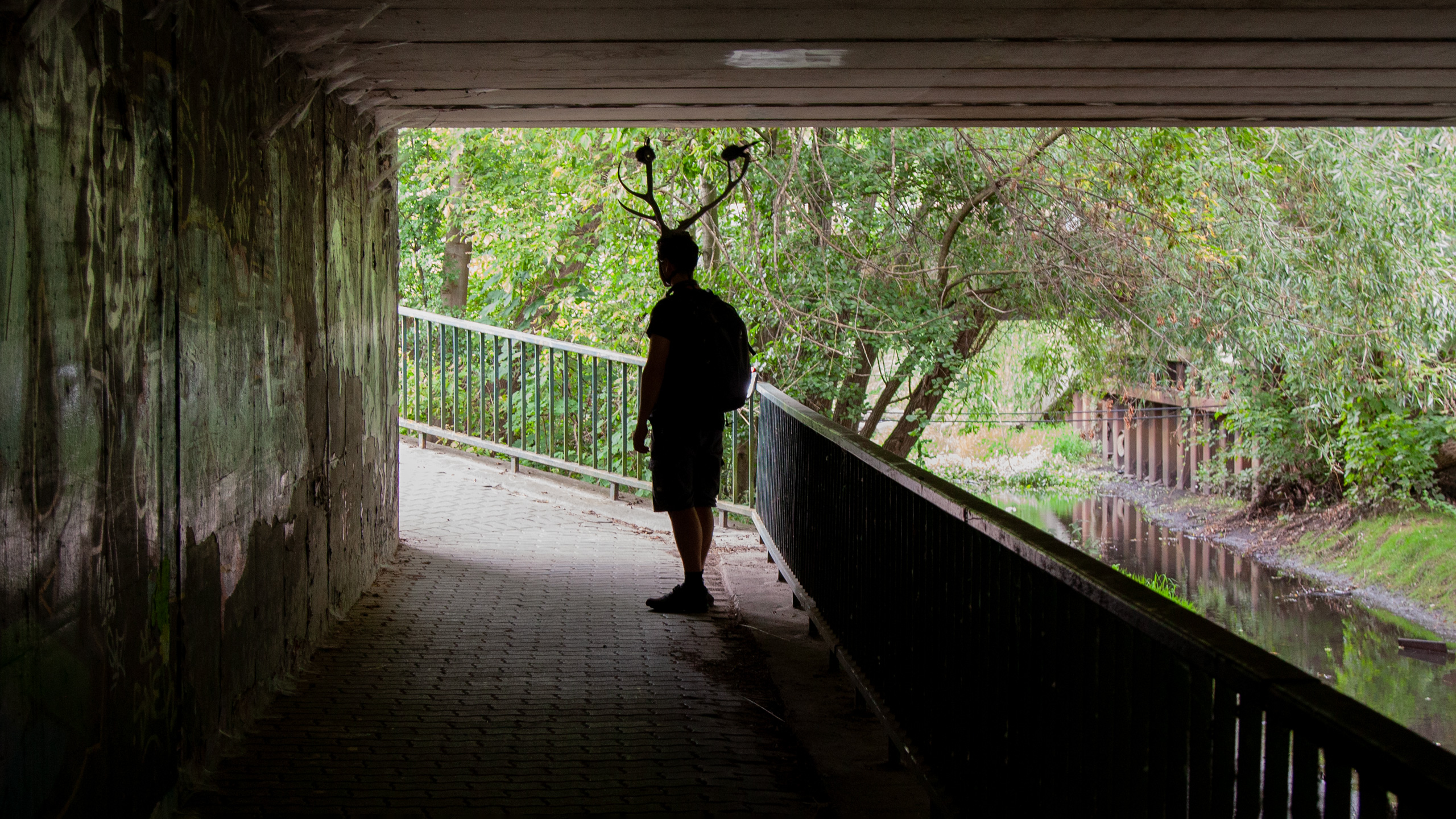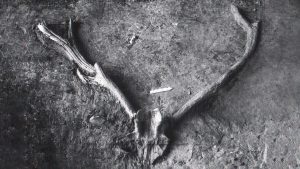Gods of the Anthropocene is a continuation of DTA’s previous project Ancestors Rising (2022). In both works, we focus on Mesolithic antler headdresses that were found in industrial or modern landscapes in Germany. The antlers, representing rare archeological objects, were most likely part of a shamanic garb, worn during important ceremonies in the stone age. They might have symbolized a connection with the wider universe, reaching out into the cosmos from the top of the head like antennae, channeling messages from higher spirits. Both works reactivate the prehistoric antler artefacts through public, site-specific interventions on their exact finding locations.
⇓ Read more
Central to the project is a replica of a 11.000-year-old antler headdress that was found in 1953 in Berlin, near the modern neighbourhoods of Marzahn and Hellersdorf. In anticipation of a new archeological excavation in the area, the project revisits the location and reinterprets the object and its purpose within an anthropogenic context. The replica is used as a boompole for two condenser microphones and as such redesigned into a communication device to talk to inhabitants near the findsite.
During several days of recording, DTA documents the journey through the neighborhood, asking inhabitants how they see their role as the new “Gods of the Anthropocene”. By doing so, the work emphasises the challenges with which inhabitants are faced in times of climate crisis. Although the current climatological change is happening at a much faster pace than before, there have been times in human history that people were also confronted with dramatic changes in weather patterns. At the end of the last ice age, the warming period was characterized by strong climate fluctuations, making it difficult for people to survive. They depended on many factors, such as weather and the migration patterns of the animals they hunted. They lived as nomads and their fate lay in the hands of the weather gods and other deities they worshipped. The Mesolithic shaman created change in the physical world from the visions he received from the universe, affecting health, fertility, crops and hunt.
The antler object reconnects us back to a time when humans still saw themselves as part of the natural environment, slowly discovering agriculture and the usage of fire while also trying to find a balance between the human usages of resources and the grace of natural gods. Rituals of sacrifice were meant to keep the gods satisfied and the humans in check with the forces of nature, contributing to a holistic balance with their surroundings. In the industrial era and the Anthropocene, this balance has been disturbed. In this project we revisited this important moment in human evolution by reactivating the headdress on the location where it was originally found and instead of asking the gods for help, we turned to the people themselves.
